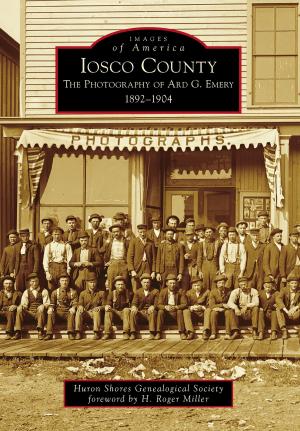| Author: | Peter Hoehnle | ISBN: | 9781439655917 |
| Publisher: | Arcadia Publishing Inc. | Publication: | April 18, 2016 |
| Imprint: | Arcadia Publishing | Language: | English |
| Author: | Peter Hoehnle |
| ISBN: | 9781439655917 |
| Publisher: | Arcadia Publishing Inc. |
| Publication: | April 18, 2016 |
| Imprint: | Arcadia Publishing |
| Language: | English |
The Amana Colonies were founded by members of the Community of True Inspiration, a Pietist sect that originated in southwest Germany in 1714. Beginning in 1842, members of the sect migrated to New York and founded the Eben-Ezer Society, in which land, shops, and homes were owned communally. Members worked at assigned jobs, attended 11 church services each week, and received food, clothing, and shelter. Beginning in 1855, the community relocated to a 26,000-acre tract in eastern Iowa, where they founded the seven Amana villages, each with its own church, school, general store, craft shop, and barns. A disastrous fire, economic downturns, and a growing dissatisfaction with communal life led the members to vote to reorganize as a separate business and church organization in 1932. Images of America: Amana Colonies: 1932-1945 examines a time when the Amana people worked to preserve aspects of their traditional religious and cultural life while, simultaneously, learning to embrace American life and the waves of people who visited these unique villages in growing numbers.
The Amana Colonies were founded by members of the Community of True Inspiration, a Pietist sect that originated in southwest Germany in 1714. Beginning in 1842, members of the sect migrated to New York and founded the Eben-Ezer Society, in which land, shops, and homes were owned communally. Members worked at assigned jobs, attended 11 church services each week, and received food, clothing, and shelter. Beginning in 1855, the community relocated to a 26,000-acre tract in eastern Iowa, where they founded the seven Amana villages, each with its own church, school, general store, craft shop, and barns. A disastrous fire, economic downturns, and a growing dissatisfaction with communal life led the members to vote to reorganize as a separate business and church organization in 1932. Images of America: Amana Colonies: 1932-1945 examines a time when the Amana people worked to preserve aspects of their traditional religious and cultural life while, simultaneously, learning to embrace American life and the waves of people who visited these unique villages in growing numbers.















